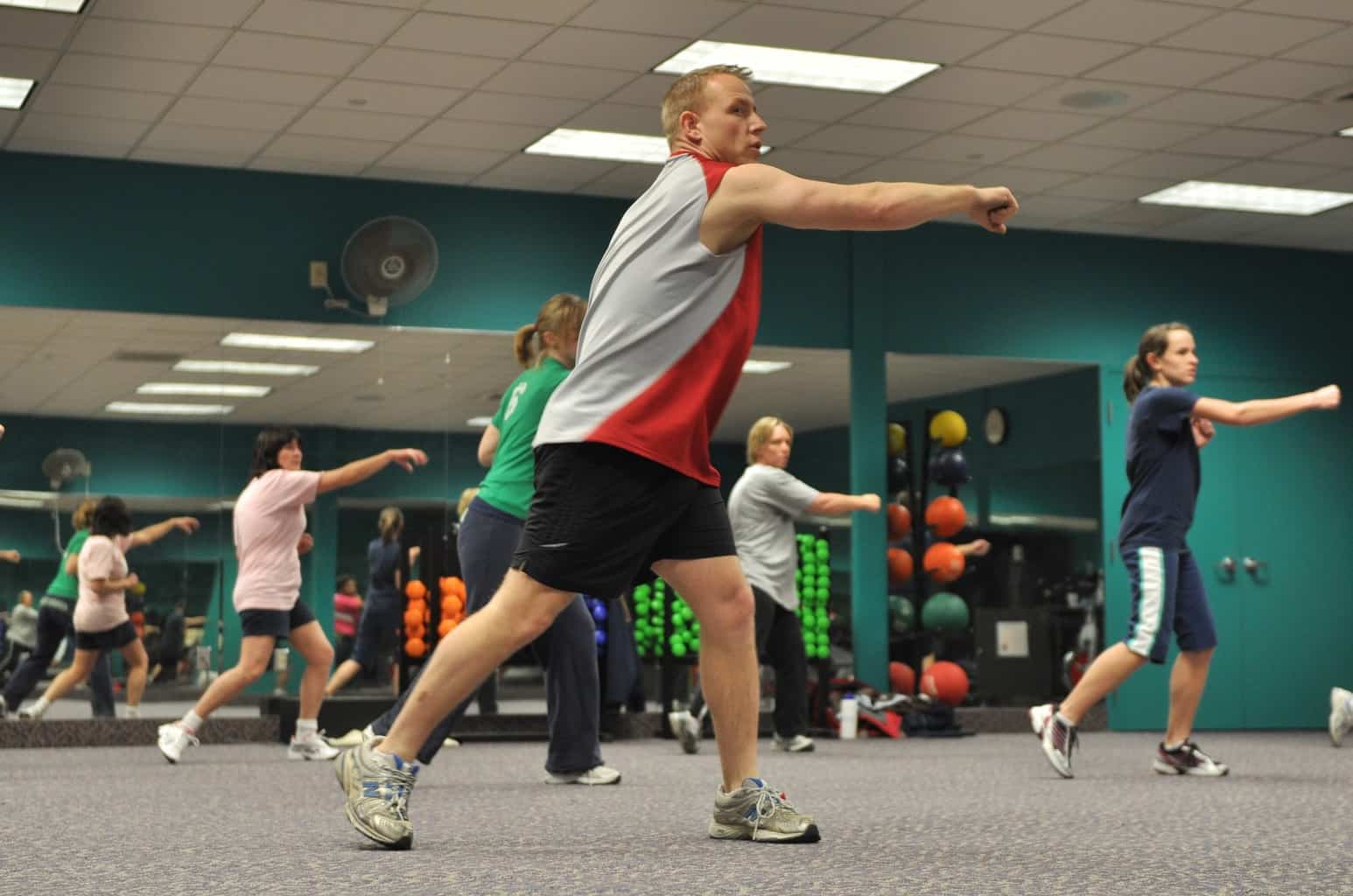- PhentermineLearn more about phentermine and how to get the most from your weight loss journey.
- ResourcesAdditional information and tools to help you make the most of your effort.
- AlternativesLearn more about the most popular weight loss medications and science-backed supplements
Everything You Need to Know About the Orange Theory
Published on December 12, 2024

Spanning more than 1,400 locations across the U.S. and globally, Orange Theory has quickly become a favorite, roping in a million enthusiasts over a decade! Picture yourself in a 60-minute session where your heartbeat picks up speed, and you’re burning calories at an amazing rate, all courtesy of high-intensity interval training (HIIT). So, you might wonder, what’s the buzz about this widely loved fitness class, who benefits the most from it, and what draws people to join the crowd?
Before you invest in a subscription, here is all you may need to know about Orange Theory.
What Is Orange Theory, and How Does It Work?
Orange Theory Fitness is a science-backed, technology-tracked, coach-inspired group workout studio. After quitting her job at a high-end spa in Miami at the age of 40, single mother and exercise physiologist Ellen Latham developed the Medical Advisory Board endorsed workout in 2010.
Each class is taught by a highly qualified coach and consists of one hour of heart-based interval and functional training—half cardio (power walking, jogging, or running) and half strength training (squats, crunches, or pull-ups) on a water rower. While each daily workout is unique, they always include the same essential elements—endurance, strength, and power—across various equipment.
Excess Post-Exercise Oxygen Consumption (EPOC), like most HIIT workouts, is based on the “caloric afterburn” science of Excess Post-Exercise Oxygen Consumption (EPOC), “which enables you to burn calories long after your workout is complete.” On the other hand, Orange Theory goes a step further by measuring your heart rate during the workout and having each participant wear a heart-rate monitor to track their progress.
Unlike in other group fitness sessions, you are not doing the same exercises as the person next to you. The goal isn’t to complete a certain number of reps. Instead, the emphasis is on your effort, which is converted into a “splat number” depending on your heart rate and age, and then splashed onto a board for all to see. What is the ultimate goal? To reach the “orange” zone, the most challenging level of effort. As a result, the term “Orange Theory” was coined.
Muscle Toning and Weight Loss
Orange Theory, like other high-intensity interval training regimens, is designed to burn calories quickly, making it excellent for anyone looking to lose weight. On the other hand, Orange Theory is ideal for those looking to gain muscle and enhance their general health.
An Orange Theory Class: What to Expect
You can expect an active, one-hour group workout session when you walk into an Orange Theory class. “New members should expect a high-intensity, full-body workout with a terrific community of people, quality coaching, and heart-pumping activities.”
While each session will follow a similar broad structure, no two classes will be identical. “Some days, workouts will focus more on one part than the others, and coaches are on hand to help members by providing detailed demonstrations, verbal cues, and exercise options to accommodate a wide range of fitness levels.”
Instructors will also be available for you every step of the way. “Coaches will lead members through the workout, making sure to answer any questions they may have while also keeping a tight eye on everyone to keep the enthusiasm up and the members encouraged.”
Orange Theory’s Advantages
Orange Theory is unique among exercises. It continuously monitors members’ heart rates while also providing performance data such as distance on the treadmills and rowers and body composition analysis from the In-Body scanners. “At Orange Theory Fitness, we use technology to demonstrate to our clients how their workout regimens are improving their health over time.”
Experts recommend that members attend at least two courses each week to achieve the American Heart Association’s physical activity requirements of 150 minutes of moderate-intensity aerobic activity or 75 minutes of vigorous aerobic exercise + two days of strength training.
According to the CDC, regular exercise has been linked to a lower risk of most chronic diseases and malignancies, enhanced mental health, improved sleep quality and latency, and favorable changes in body composition.
Considerations for Safety
If you have any injuries or pre-existing ailments, you should always see your doctor before beginning any new workout. On the other hand, Orange Theory suggests engaging with the coaches directly about personal injuries.
Several studios conduct workouts outside and comply with all CDC recommendations, ranging from required masks and temperature checks to a strict sanitation protocol and social distancing. Orange Theory Studios has also taken precautions to safeguard its clients’ safety. They also offer Orange theory At HomeTM workouts available every day on the Orange theory Fitness YouTube channel.
Traditional HIIT Classes vs. Orange Theory
Orange Theory is a high-intensity interval training that differs from previous approaches in several respects.
Orange Theory’s exercises, according to experts, incorporate interval training with various stations (treadmills, rowers, and weight floor) that keep members engaged throughout the class. It is more cardio-intensive than other types of HIIT.
“Orange Theory is a combination of cardio and strength training, with cardio accounting for roughly half of the hour-long workout,” says the author.
Furthermore, the “strength training you do on the floor on the floor” isn’t HIIT because it doesn’t require you to complete a specified number of reps and sets. “Rather, you work in sets, concentrating on reps and form. Each block of exercises in the strength-training/floor section concludes in a set amount of time, and everyone is urged to go at their own pace, so they don’t overdo it.”
The length of the workouts is another significant distinction between HIIT and Orange Theory. The majority of HIIT workouts are 20 to 30 minutes. However, an Orange Theory session lasts an hour. “Research has shown that people may burn equivalent quantities of calories in 20- to 30-minute HIIT exercises compared to longer continuous workout regimens of 50 minutes.”
While several high-intensity interval training (HIIT) routines are available, experts say Orange Theory stands out. “The vast majority of them do not use health-monitoring software.” “To put it another way, they don’t use intervals to reach important heart-rate zones that enhance afterburn.”
When Attending an Orange Theory Class, What Should You Wear?
According to experts, wear “a comfortable exercise wardrobe with supportive sneakers” to class. You’ll put on an OT beat Heart Rate Monitor when you arrive, which will track your workout and provide real-time physiological feedback.
How to Begin Using Orange Theory
It’s simple to get started with Orange Theory: just show up! “If it’s your first class, come a few minutes early to get set up with an OT beat Heart Rate Monitor, meet the teacher, and get used to the workout,” experts advise. “In some cases, you can virtually meet the coach before your first session. That way, you’ll know what to anticipate when you arrive at the studio, get any questions answered, and be able to discuss your fitness objectives with your coach before you even enter.”
The coaches are available to answer any questions you may have during or after the workout, including those related to your workout performance report.
But First, More About Orange Theory!
Orange Theory combines HIIT and regular cardio to help people achieve their fitness objectives, whether weight loss, strength, or endurance. HIIT is a technique in which you alternate between shorter intervals of high-intensity activity and periods of lower-intensity exercise or rest. Evidence suggests that HIIT exercises may be more effective at fat loss than typical steady-state cardio. While Orange Theory incorporates HIIT principles, the workout also emphasizes cardiovascular endurance by gradually increasing heart rate, which aids overall endurance, power, and strength.
Because they “consist of either endurance, strength, or power training inside your one-hour workout,” the session offers a well-rounded, full-body workout. No two exercises are ever the same because of the many templates we use.” When you change your activity from day to day, you keep your muscles guessing and avoid burnout and boredom with your workout. Orangetheory, like CrossFit, features a single daily training that is shared throughout all of their gyms around the country.
In Orange Theory, What Are ‘Zones’?
“Zones” is the Orange Theory spin on HIIT. During your workout, a digital board on the wall shows you what zone you’re in depending on your heart rate (measured by your wearable heart rate monitor) and what zone you should aim for based on your personalized workout plan. They distinguish five zones, the most noteworthy being Zones 3, 4, and 5.
Zone 3 is a moment when the activity should be challenging but not to the point of exhaustion. Zone 4 is a little more challenging, making the exercise feel a little uneasy. Zone 5 is the maximum level of intensity you can offer an activity, and you should only do it for a brief time. The final goal is to spend roughly 12 minutes in Zones 4 and 5 during the one-hour workout.
The zones’ science is based on the idea of excess post-exercise oxygen use. What does that imply? Your body will need many time to recover, so your metabolism will continue to burn calories for up to another 24 hours.
As previously stated, your zone tracking will be based on a wearable tracker. There are a few different trackers to select from, but most are worn around the wrist or the waist. These trackers connect to an app on your phone and a TV monitor in the room, allowing you to follow your progress throughout your workout.
During an Orange Theory Class, What Happens?
Each class lasts one hour. According to Ingram, the time is divided into thirds, with time spent on the treadmill, the rowing machine, and the floor.
- Treadmill: According to Ingram, “the treadmill is perhaps the most recognizable element of an Orange Theory exercise.” “The workouts are designed to resemble an outside experience.” We can focus on different muscles and parts of aerobic and strength training by adjusting the factors of pace or incline. Speed changes will concentrate on power, incline changes will focus on strength, and flat roads of 1-3 percent for a timed distance will focus on endurance and respiratory training.”
- Rower: According to Ingram, “the rowing machine is a terrific full-body workout that integrates 85 percent of the body’s muscles while mimicking the natural method of water rowing.” “We will work different energy systems of the body based on the distance, stroke rate, and time allocated to execute this section.” Lower distances between 100 and 500 meters will emphasize power, while medium lengths between 500 and 1000 meters will emphasize strength, and most distances beyond 1000 meters will emphasize endurance. “This machine is a one-stop shop.”
- Floor exercises: This is where the class’s strength training takes place. “Exercises utilizing TRX straps, benches, free weights, mini bands, and other equipment make up the floor component,” explains Ingram. “Which equipment you utilize depends on the training you’re doing on that particular day. The coach will demonstrate each exercise before you begin the floor section. There’s also a video screen with a GIF of the exercises, as well as the number of sets and reps to execute.”
Do You Think Orange Theory is Right for You?
Orange Theory is a wonderful workout option, according to experts, because the intensity is dependent on your particular heart rate zones, making it suitable for people of various fitness levels. Because You can modify the workouts so easily, Orange Theory is a wonderful option for beginners. It’s also fantastic since the zones you’re assigned are unique, based on your height and weight, among other things.
Many Orange Theory members believe that the various daily workouts foster camaraderie and community inside their gyms, which is another compelling incentive to keep going. Another advantage of having a standard daily activity across all gyms is that it allows the coach to spend more time demonstrating modifications that can be made to take an individual’s training to the next level (or make it safer or more manageable), rather than showing an exercise or explaining how to do a move.
While the freedom to customize workouts makes Orange Theory a viable training option for many people, it’s still a good idea to speak with a doctor before beginning any strenuous program.
In this type of atmosphere, you risk overexerting yourself because you see how quickly others work around you and feel forced to keep up. While adhering to the zones assigned to you, make sure you listen to your body and set your boundaries. Don’t be misled by the speed or weight that others in the class are using. To avoid damage, pay attention to your body and respect your boundaries.
“You’re asking for an injury if you go from not working out at all to an hour class where you’re trying to go as hard as you can to get into the ‘orange zone,'” experts say. They also point out that these classes don’t always account for adequate rest times, metabolic load, mechanical tension, or muscle damage. “Trying to lift heavy without sufficient recovery, knowing your % of one-rep max, and having your tempo under control won’t pack on the muscle,” they explain. So ease into it, especially if you’re currently in couch potato mode. A few weeks of activity like walking/jogging and weight training before trying a class could be a good idea.
How to Make the Orange Theory Approach Part of Your At-Home Workouts
It’s effortless to incorporate Orange Theory aspects into your home workouts. The best approach to track your heart rate during a workout is to use a fitness tracker like a FitBit or an Apple Watch.
You may lose your competitive spirit with the rest of the class, but pushing your heart rate to particular thresholds and thinking of your past success as your competitor will help you stay motivated. Try to do more reps in the same amount of time or the same amount of reps in less time in each workout than you could finish in the previous one. Keep a journal of your progress to see how your numbers, speed, and strength increase week by week.
You can even set up stations in your family room or home gym to imitate the structure of an Orange Theory session. Instead of lingering in one spot, make yourself move from section to section of the room. Put your yoga mat in one corner and perform core exercises there; place weights in another corner and conduct strength training there; and finally, place a resistance band in another corner and do resistance training there.
You may look for Orange Theory-inspired exercises on YouTube and Pinterest to get some more ideas about how you can practice the method at home.
Summary
Orange Theory is a research-based, highly structured group fitness HIIT program with over one million members worldwide. Like other HIIT workouts, Orange Theory is a terrific alternative for anyone looking to blast calories, burn fat, develop muscle, and maintain general health. It’s also a fantastic choice for anyone who thrives in a group workout setting, is motivated by competition, and values exercise science.
REFERENCES:
- https://www.nbcnews.com/better/lifestyle/what-orangetheory-could-it-help-you-lose-weight-ncna1131576
- https://aladygoeswest.com/everything-you-need-to-know-about-the-orangetheory-fitness-workout
- https://www.byrdie.com/orangetheory-5093029
- https://www.popsugar.com/fitness/Beginner-Tips-Orangetheory-Fitness-46211019
- https://www.self.com/story/orangetheory-fitness
- https://www.shape.com/fitness/orangetheory-fitness-for-beginners-what-to-know


